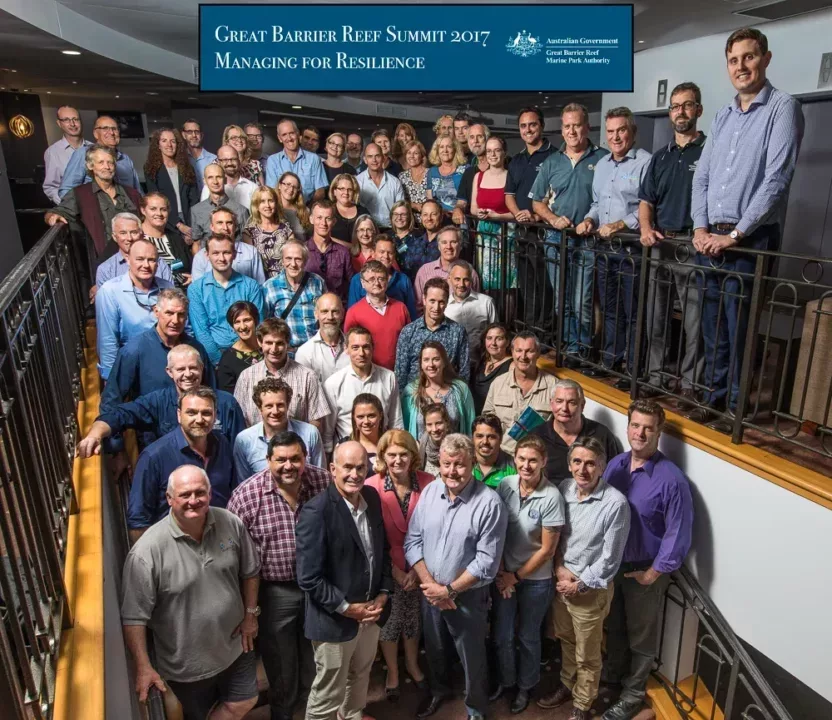A blueprint to respond to coral bleaching and other recent impacts on the Great Barrier Reef was the focus of this week’s two-day Reef Summit in Townsville, Australia.
Hosted by the Great Barrier Reef Marine Park Authority, the summit — Managing for resilience— was the first of its kind for the Reef and involved more than 70 leading marine experts from around the world.
It was a response to unprecedented back-to-back coral bleaching events on the Great Barrier Reef and aimed at determining what else could be done in addition to the already extensive actions being undertaken to protect the Reef.
Great Barrier Reef Marine Park Authority Chairman Dr Russell Reichelt said coral reefs worldwide were under threat from a range of pressures, particularly the effects of climate change which is contributing to increasing sea surface temperatures globally, leading to mass coral bleaching.
Severe and widespread impacts over the last two years have resulted in significant coral decline and habitat loss on the Great Barrier Reef, and reefs worldwide, and foreshadow a trend of further declines driven by climate change.
“The last two years highlights the need for urgent action to slow coral decline,” Dr Reichelt said.
“The Great Barrier Reef is a large and resilient system that’s previously shown its capacity to bounce back, however the current changes are undermining the resilience of the Reef.
“Summit participants voiced their strong concern about the need for global action to reduce greenhouse gas emissions, the driver of climate change.”
The summit builds on an existing strong Marine Park management framework, widely recognised as world standard. It complements strong action through the Australian and Queensland governments’ Reef 2050 Plan which is central to building Reef resilience.
“These existing actions are strongly supported by summit participants as essential to sustain Reef resilience and support ecosystem recovery following extreme events such as coral bleaching and cyclones,” Dr Reichelt said.
“The summit explored a number of additional options including developing coral nurseries, strategies for extending culling activities for the coral-eating crown-of-thorns starfish, protecting herbivorous fish, expanding the vessel monitoring system and identifying priority reefs and demonstration sites for coral restoration.”
Key themes also emerged from the workshops, including:
- protect (e.g. from anchor damage), defend (cull more coral-eating crown-of-thorns starfish), restore (e.g. establish coral nurseries)
- start small and scale up — trial strategies at the local level and implement at the Reef-wide scale
- identify Marine Park policy enablers to facilitate immediate responses and transformative change
- use tried and test technologies in parallel to blue-sky solutions.
“The summit generated a lot of energy and passion from participants,” Dr Reichelt said.
“For me the take away message was ‘there is a lot we can do to ensure the ongoing protection of the Reef’, and engaging the broader community — locally, nationally and internationally— in long-term protection through everyday actions is essential.”
Input from the summit will be synthesised and evaluated over the next few weeks to produce a blueprint for action.
A full report on the key outcomes will be released at www.gbrmpa.gov.au
